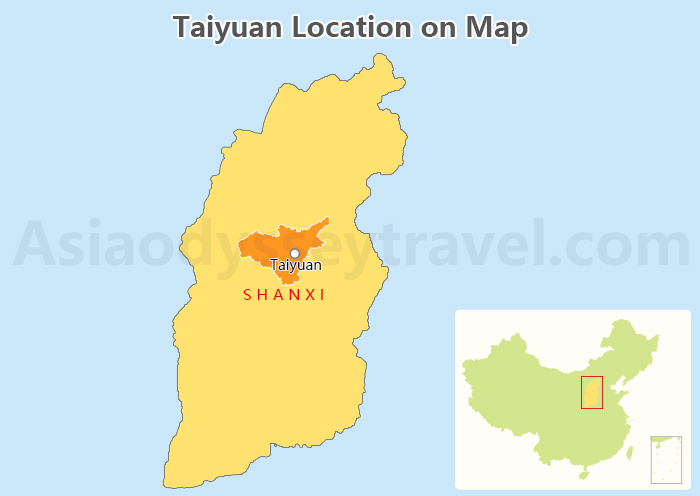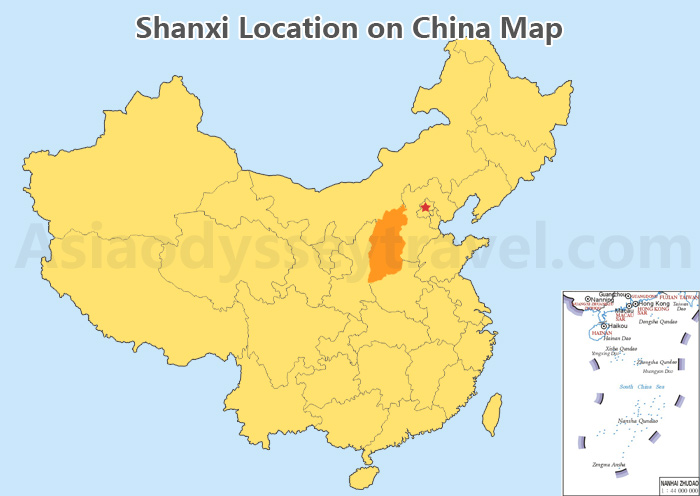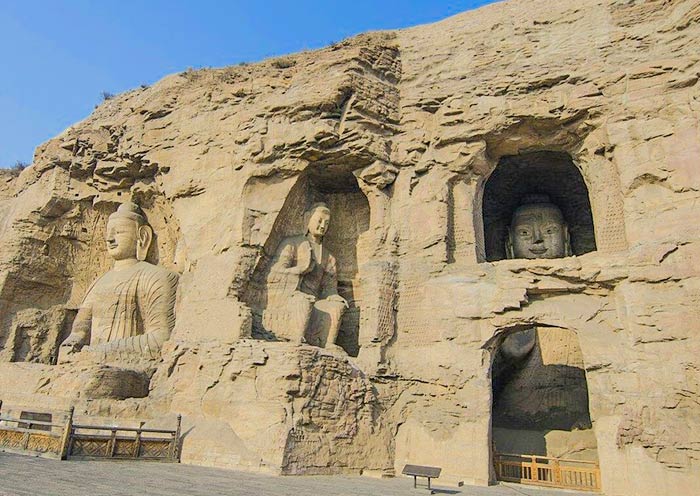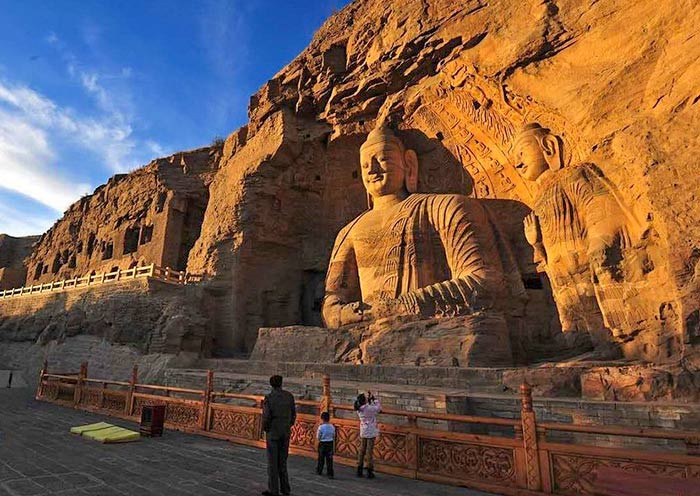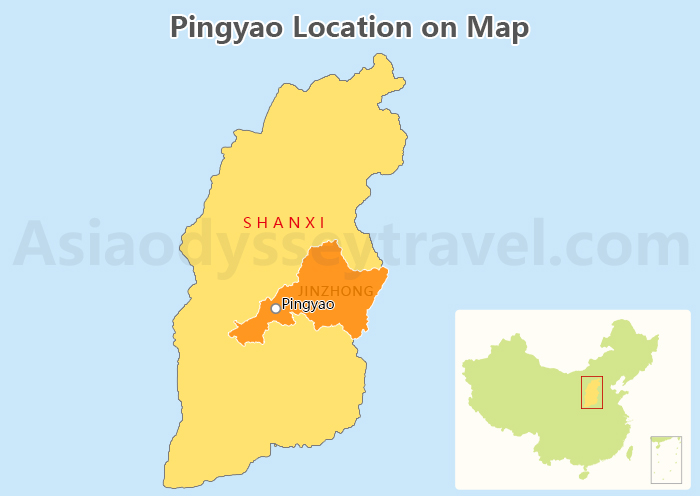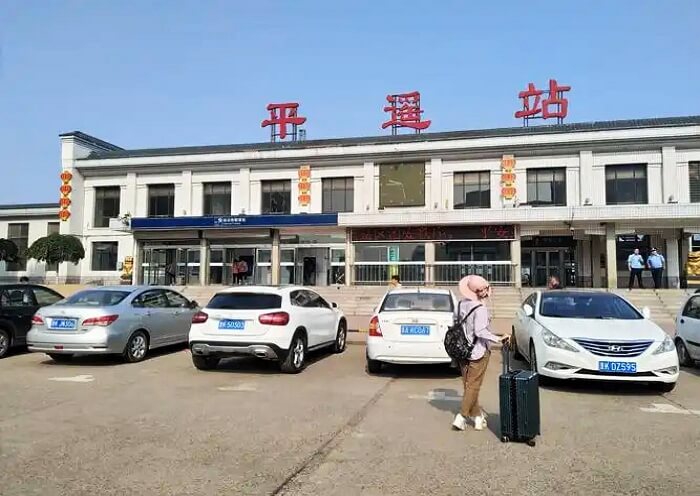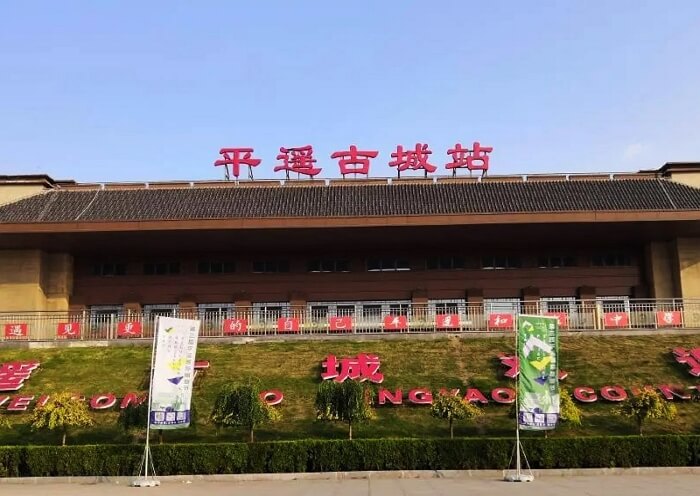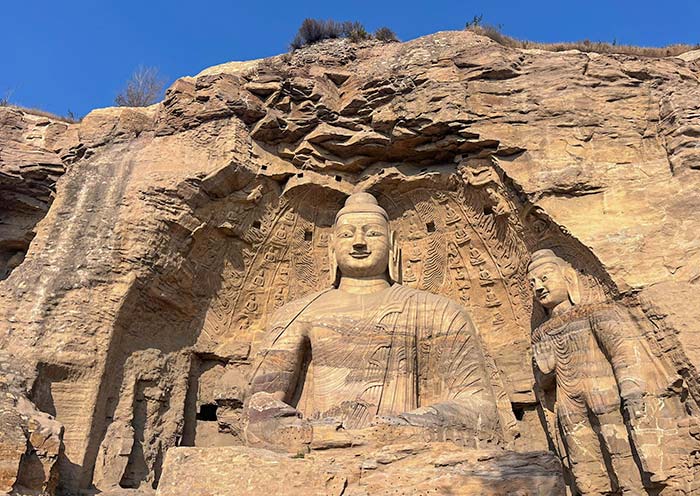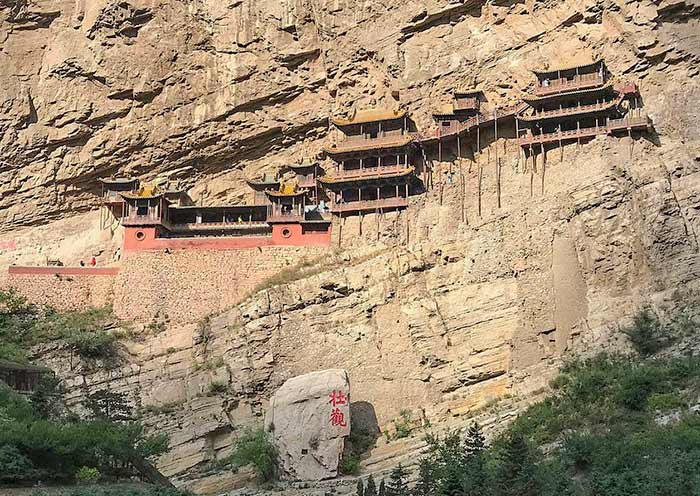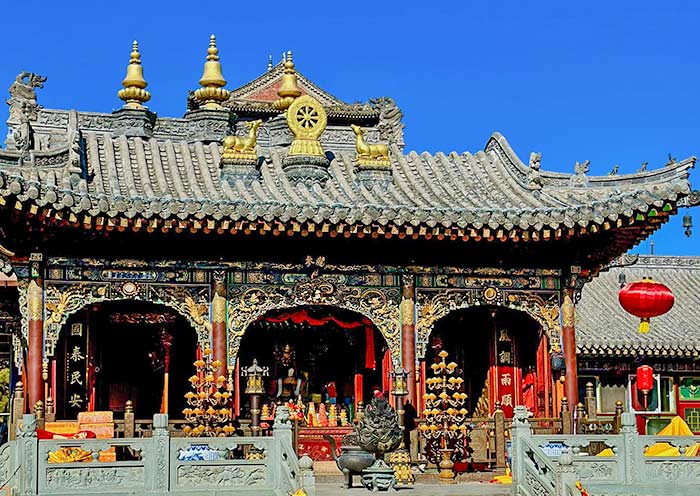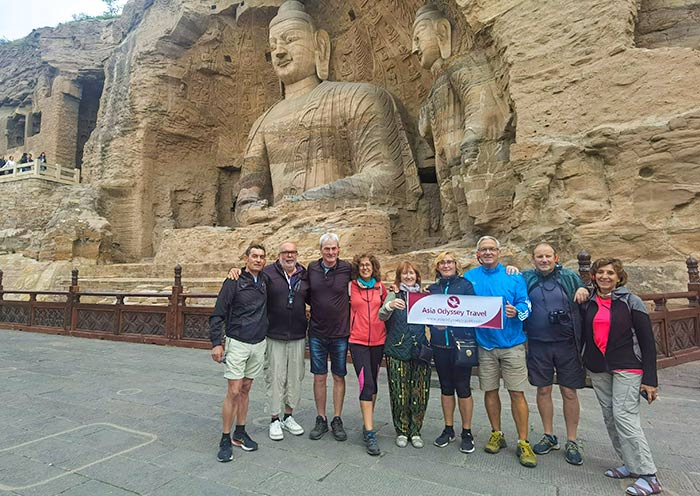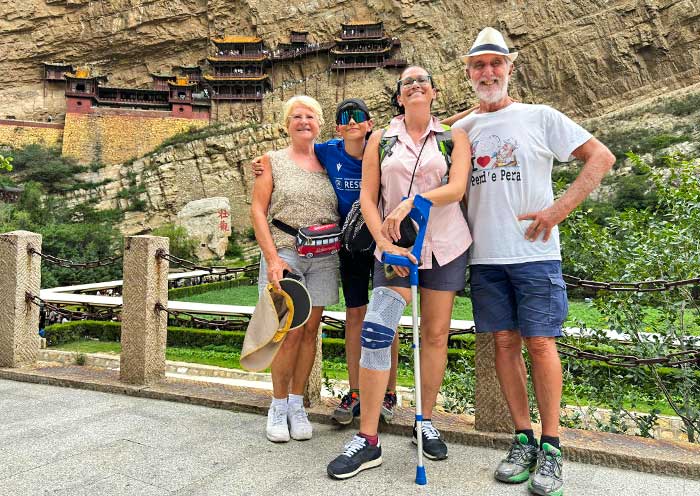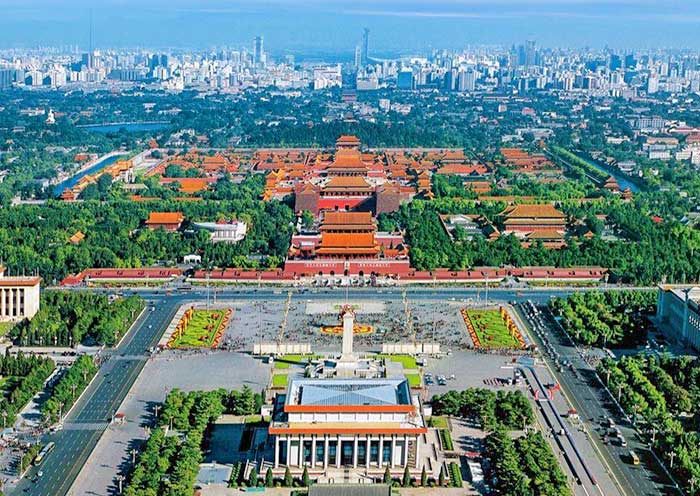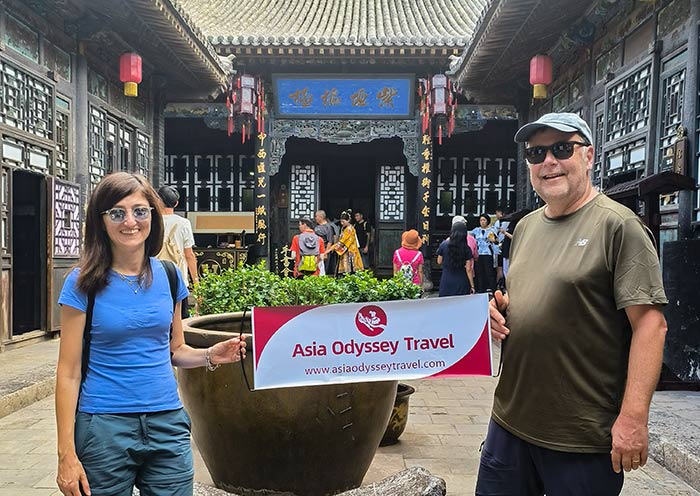Must-See Guide - Which Shanxi Tourist Attraction Are You Heading To?
To fully experience Shanxi tourist attractions, plan a trip of at least 4-6 days. Here are some highlights to think about:
1. For tourists who wish to explore the UNESCO World Heritage Sites in Shanxi, there are the Yungang Grottoes, a collection of Buddhist sculptures, the well-preserved Pingyao ancient city, and Mount Wutai, a sacred Buddhist pilgrimage site.
2. For tourists who want to visit Shanxi's thousand-year-old temples, there's the Hanging Temple, a cliffside monastery, Huayan Temple from the Liao Dynasty, Shuanglin Temple, a UNESCO & colored sculptures, and the world's tallest Wooden Pagoda.
3. For tourists who love to learn about the Chinese Jin merchants, who were as famous as Italian merchants, it's recommended to visit the Qiao Family Compound and Wang Family Compound, two examples of Jin merchant residences.
4. For tourists who want to experience the ancient dynasties' rituals of prayer and sacrifice, there's the Jinci, the earliest surviving royal sacrificial garden.
5. For tourists who want to see the ancient military systems of Shanxi, visit the Datong Ancient City Wall, Yanmen Pass, and Zhangbi Ancient Fortress.
6. For tourists who enjoy natural scenery, visit Mount Wutai, and the Hukou Waterfall, China's second largest waterfall.
7. For fans of Black Myth: Wukong to enjoy offline travel, check out the Yungang Grottoes, Hanging Temple, Wooden Pagoda, and Mount Wutai.
No. 1 Yungang Grottoes - Majestic Grottoes and Silk Road Heritage
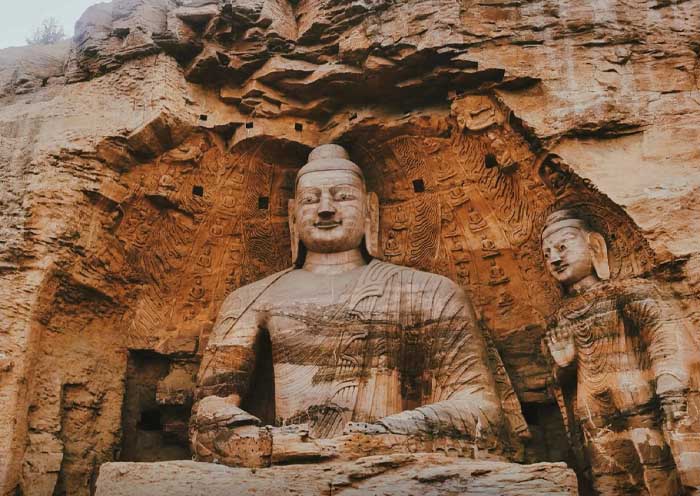

Highlights: UNESO World Heritage Site, One of China's Three Great Grottoes.
Location: No. 1, Yungang Town, Yungang District, Datong City, Shanxi Province, China
Ticket:
Peak Season: 120 yuan (April 1st - October 31st)
Off-peak Season: 100 yuan (November 1st - March 31st)
Opening Time:
9:00 - 17:00 (April 1st - June 16th)
8:00 - 18:00 (June 17th - September 30th)
Recommended Time: 2-3 hours
Ask any tourist who has visited Shanxi, "What is the must-see Shanxi attraction first?" and the answer will undoubtedly be the Yungang Grottoes (云冈石窟), a UNESCO World Heritage Site. As the top 1 Shanxi attraction, it showcases both the enduring mystery of Buddhist statues that have stood for millennia since the Northern Wei Dynasty and Shanxi's rich Silk Road heritage.
Carved into the cliffs during the 5th century Northern Wei Dynasty, this China's first imperial grottoes is considered one of China's greatest, standing alongside the Mogao(莫高窟) and Longmen Grottoes(龙门石窟). The grottoes beautifully fuse imported Buddhist art from India and Central Asia with traditional Chinese styles. Time has transformed the surrounding landscape, but this one-kilometer-long complex of 254 caves remains as captivating as ever.
What's more, the frequent repair ensures that visitors can always enjoy the sites in their best condition. The Yungang Grottoes are an absolute must-visit for anyone traveling to Shanxi.
What to See in Yungang Grottoes
These hot caves make Yungang Grottoes a even more top Shanxi attractions over the years.
Explore the largest Cave 3: Slowly walk along the narrow paths of Yungang Grottoes Cave 3 until you enter the spacious Buddha hall. Look up and be amazed by the 10-meter-tall Bodhisattva statue.
Capture the exquisite beauty of Caves 5 and 6: One of the most memorable experiences is visiting these two caves and witnessing the intricate carvings. Immerse yourself in the Buddhist aesthetics of a thousand years ago, like the tallest Buddha statue in Cave 5 and the depictions of Shakyamuni Buddha's life in Cave 6.
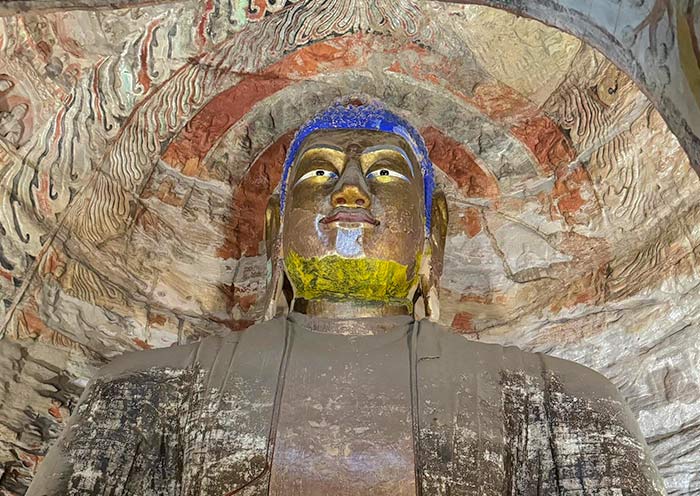
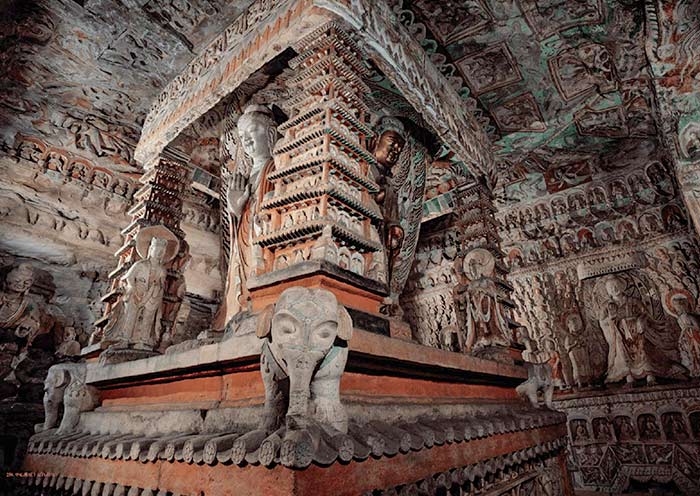
Encounter the most beautiful Buddha in Cave 7: Be sure to look at the cave's entrance, where you'll find the Six Beauties, graceful figures with serene expressions.
Experience music with Cave 12: This cave is adorned with a Northern Wei court orchestra. The musicians, holding over 40 different instruments, appear lively, as if inviting you to join a live performance.
Feel the grandeur of the Buddha in Cave 13: Unlike most seated Buddhas, here you'll find a majestic cross-legged Maitreya Buddha.
Meditate with the thousand Buddhas in Cave 15: Look around and find peace as you contemplate the over ten thousand small Buddha statues arranged in neat rows.
No. 2 Hengshan Hanging Temple - Cliffside Carving of Ancient Times
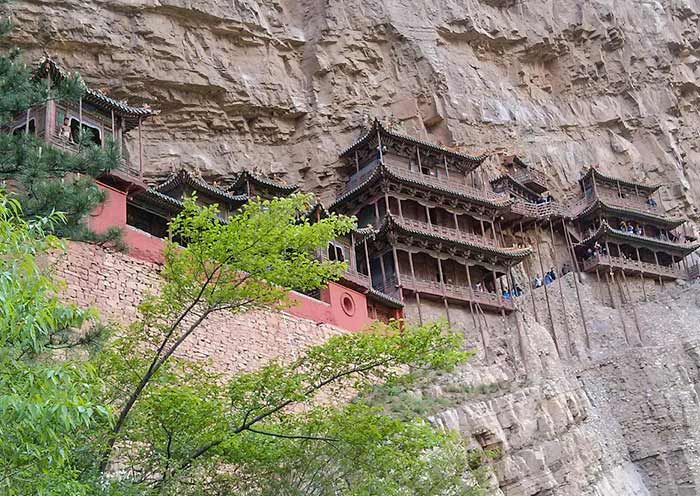
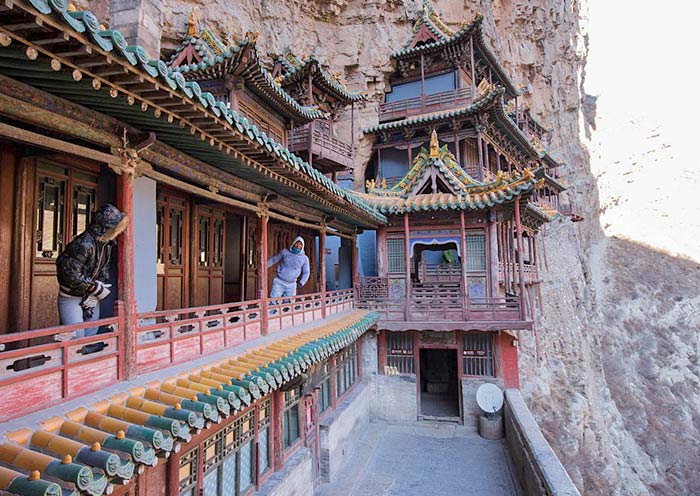
Highlights: A Cliffside Temple, A Harmonious Blend of Three Religions.
Location: Foot of Hengshan Mountain, southeastern suburb, Hunyuan County, Datong City, Shanxi Province, China
Ticket: Entrance fee 15 yuan, Climbing Hanging Temple 100 yuan
Opening Time:
7:30 – 18:30 (March 1st to October 31st)
8:30 – 17:00 (November 1st to February 28th)
Recommended Time: 2 hours
Hanging Temple(悬空寺) frequently ranks among the top Shanxi attractions and is one of the most famous cultural landmarks in the region. As its name suggests, the temple is built into the middle of a cliff, making it one of the rare attractions that directly uses its location as its name.
If you delve into the 1500-year history of Hanging Temple, you'll be surprised by the cultural background of Confucianism, Buddhism, and Taoism that underpin the temple. It is one of the few remaining temples in China that simultaneously venerates Confucius, Shakyamuni Buddha, and Laozi.
From a distance, the temple appears like a celestial palace suddenly emerging from the sheer cliff. The fact that such an ancient temple, steeped in religious culture and architectural art, has blossomed on such a barren and steep cliff feels like a dream becoming reality.
Climb the Hanging Temple: Where Three Religions Converge
In the spring and autumn of Shanxi, Hanging Temple is especially enchanting. Surrounded by apricot blossoms in spring and red leaves in autumn, Hanging Temple becomes a dynamic painting, attracting countless visitors.
Climb the Temple: Experience the thrill of climbing one of the world's most precarious structures as designated by Time Magazine. Wind your way through narrow passages, marvel at the sheer cliffs, and feel a sense of tranquility as you explore the ancient temple.
Explore the Three Religions Hall: Venture into the heart of the temple to witness the unique blend of Confucianism, Buddhism, and Taoism. Learn about the harmonious coexistence of these three religions.
No. 3 Pingyao Ancient City - Epitome of Ancient County Towns

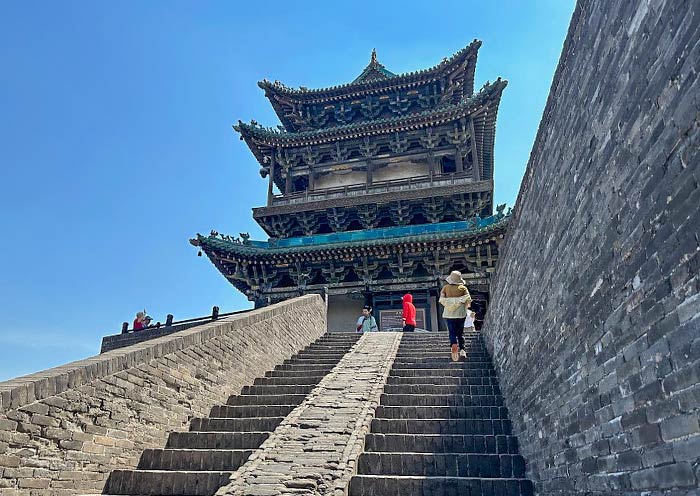
Highlights: UNESCO World Heritage Site, Ancient City Wall, Ancient "Wall Street", Ming and Qing Dynasties Street and Structure.
Location: Kangning Road, Pingyao County, Jinzhong City, Shanxi Province, China
Ticket: 125 yuan
Opening Time: 08:00-18:00
Recommended Time: 1 Day
Shanxi tourist attractions are renowned for their deep historical roots. If you're seeking a place where ancient residents once lived, Pingyao Ancient City is a must-visit destination.
Stepping into Pingyao Ancient City, with its history spanning 2700 years, the modern, square buildings give way to low-rise, traditional Chinese houses adorned with intricate eaves and brackets. As one of China's most well-preserved ancient county towns, over 400 old residences are scattered throughout the narrow alleys.
Explore Rishengchang Former Bank and Ancient Streets
Famous for the Rishengchang Former Bank, often referred to as the "Wall Street of ancient China," Pingyao was home to China's first private financial institution. In the 19th and 20th centuries, Pingyao was considered the financial center of China.
This renowned Shanxi attraction is still home to approximately 10,000 residents who maintain a simple lifestyle, playing chess under ancient eaves. They coexist harmoniously with the ancient city. Despite its relatively small size of 2.25 square kilometers, Pingyao offers a wealth of attractions, including the county government office, the City God Temple, the city wall, the ancient bank, and the escort agency, making for a fascinating journey.
No. 4 Qiao's Family Compound - Witness to the Zenith of Shanxi Merchants
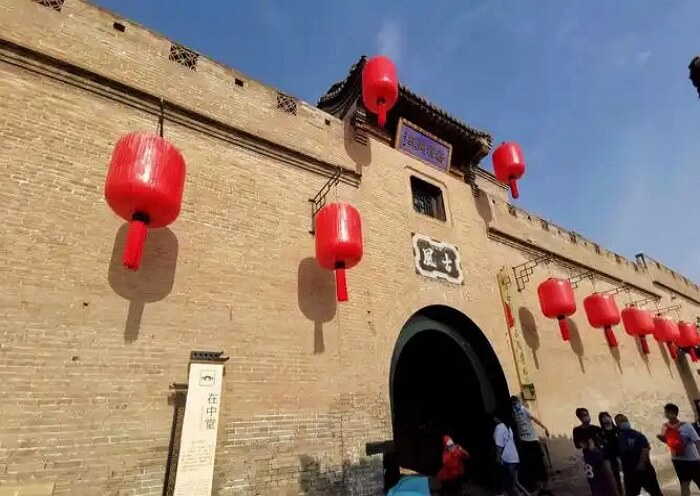
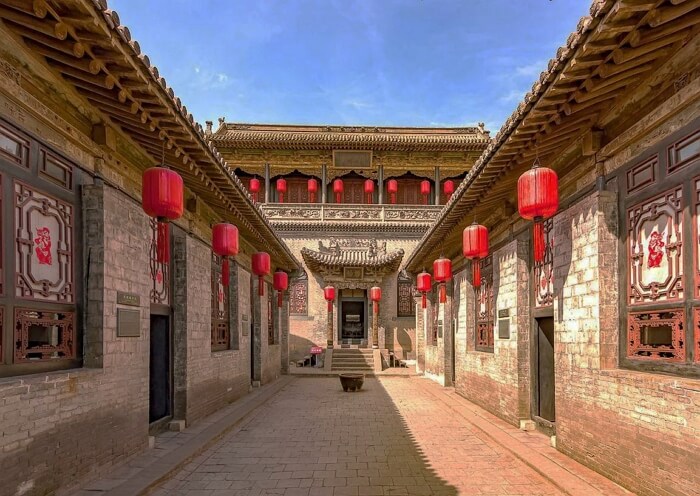
Highlights: Old House of Jin Merchants, "囍" Shaped Enclosed Castle, Beautiful Carvings.
Location: Qiaojiabao Village, Dongguan Town, Qixian County, Jinzhong City, Shanxi Province, China
Ticket: 115 yuan
Opening Time: 08:30-17:30
Recommended Time: 1 - 3 hours
When discussing Shanxi attractions, one cannot ignore the caves, ancient monasteries and city. However, ancient residences are also among the most popular tourist destinations in Shanxi!
Qiao's Family Compound (乔家大院) is a prime example, a closed-compound architectural complex built approximately 270 years ago. It chronicles the rise and fall of the Qiao family, a prominent member of the Shanxi merchant class (Also named Jin Merchants).
This site has been featured in numerous Chinese TV series, and the historical events behind the courtyard are truly astonishing.
Visitors are immediately struck by the exquisite lifestyle of this wealthy merchant family, as evidenced by the layout, carvings, and collections. For any visitor to Shanxi, this is a window into the culture of a great ancient family.
Best Things to Do at Qiao's Family Compound
Discover the Shanxi Merchants: Sculptures of these influential businessmen can be found throughout the courtyard. The Shanxi merchants were once a powerful trading group, their wealth rivaling that of the Qing Dynasty. However, the once prosperous Shanxi merchants eventually fell behind the times and were left with only their grand mansions.
Explore the Courtyard: As you walk through the courtyard, admire the gradually ascending layout, shaped like the Chinese character "囍". Comprising 6 large courtyards, 9 small courtyards, and 313 rooms, this multi-layered residential labyrinth offers a truly remarkable sight.
Admire the Craftsmanship: Appreciate the exquisite carvings and treasures, including stone, wood, and brick carvings and the Nine-Dragon Lamp, a gift from the Empress Dowager Cixi.
No. 5 Wang's Family Compound - A Folk Palace Rivaling the Forbidden City
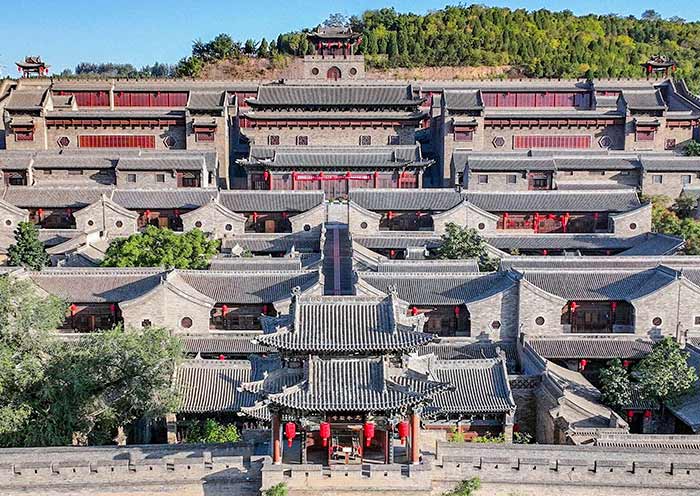
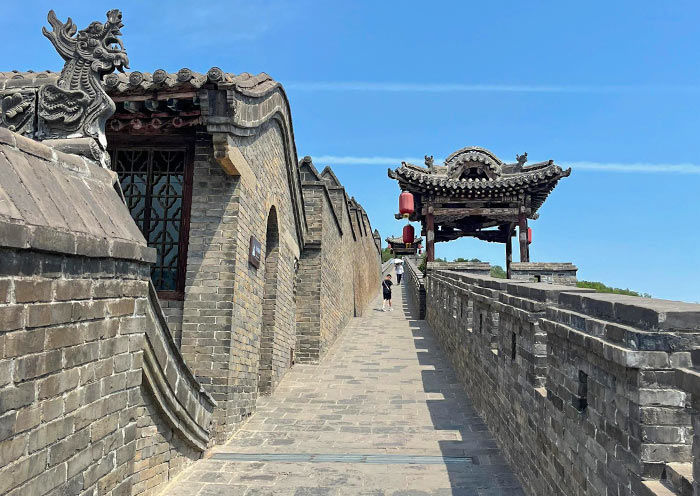
Highlights: Shanxi Merchant Castle, China's Folk Palace.
Location: Jingsheng Village, Jingsheng Town, Lingshi County, Jinzhong City, Shanxi Province, China
Ticket:
Peak Season: 55 yuan (April 1st - October 31st)
Off-peak Season: 35 yuan (November 1st - March 31st)
Opening Time: 08:00-18:00
Recommended Time: 1 - 3 hours
Renowned as "China's No. 1 Folk Residence," the Wang's Family Compound is a massive, well-preserved Shanxi merchant compound. The buildings are arranged along a central axis. Constructed over three centuries by generations of the Wang family, both officials and merchants, it is five times the size of the Qiao's Family Compound. This is why it ranks among the top tourist destinations in Shanxi.
Nestled amidst rolling yellow hills, the Wang’s Family Compound, though referred to as a courtyard, resembles a castle, standing in stark contrast to the low houses of ordinary people.
What to See at the Wang's Family Compound?
Overlooking Wang's Family Castle: Despite its name suggesting a courtyard, the towering walls are reminiscent of a European castle. Explore the surrounding natural ravines, the defensive turrets within the castle, and the vast complex of five large courtyards, 123 courtyards, and 1,118 rooms.
Discover the Gaojia Cliff Architectural Complex: Stroll through the courtyards and admire the exquisite brick, wood, and stone carvings.
Explore the Red Gate Fort Architectural Complex: Wander through the courtyards that climb the hillside, arranged symmetrically and forming the Chinese character "王"
with four rows of courtyards along the central axis and alleys.
Admire the Stone Wall: At the Jing Sheng Confucian Temple, discover the stone wall depicting the traditional Chinese motif of a carp leaping over a dragon gate, renowned as the "China's Number One Wall" and symbolizing striving for success.
Moreover, if you glance closely, you'll discover a diminutive white door nestled beside the main entrance, a quaint little gateway that the ancients thoughtfully created for their beloved cats.
No. 6 Shuanglin Temple - Masterpiece of China's Colored Sculptures
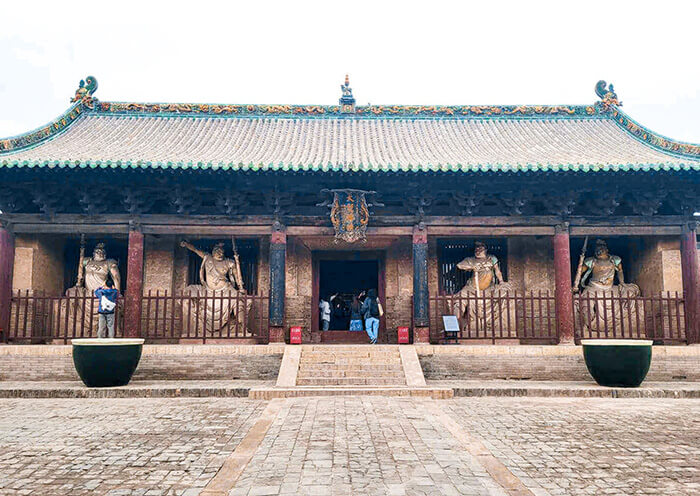
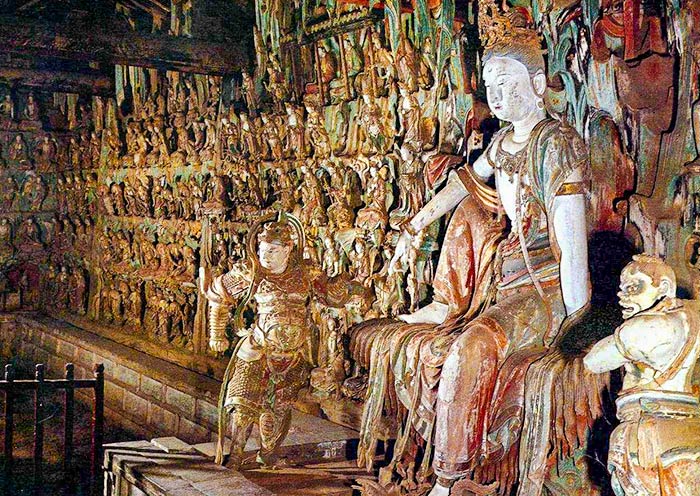
Highlights: UNESCO World Heritage Site, Color Statues.
Location: Pingyao County, Jinzhong City, Shanxi Province, China
Ticket: 35 yuan
Opening Time: 08:00-19:00
Recommended Time: 1-3 hours
Shuanglin Temple (双林寺), is a UNESCO World Heritage Site. This Buddhist temple, with a history spanning over 1600 years, is a renowned destination among the Shanxi tourist attractions.
Famous for its colorful sculptures, the temple houses over 1600 exquisitely crafted clay figures on wooden frames. These sculptures represent the pinnacle of Chinese sculptural art from various dynasties and have been hailed by UNESCO as "a true and unique treasure".
Located just 6 kilometers from Pingyao Ancient City, the temple is easily accessible.
No. 7 Jinci Temple - Living Fossil of Imperial Sacrificial Gardens

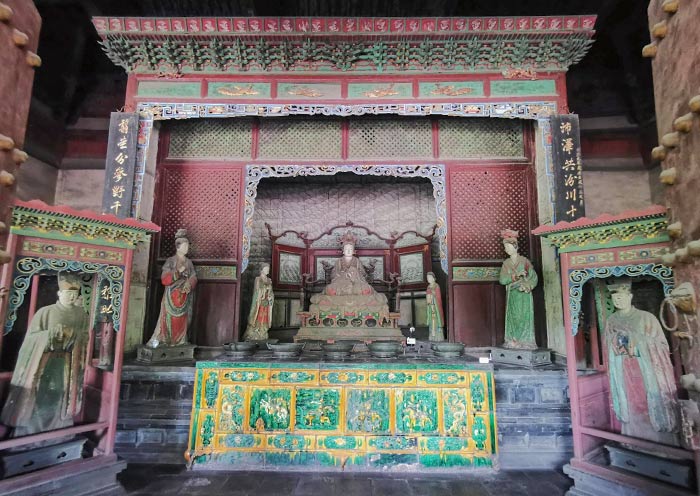
Highlights: Imperial Sacrificial Garden, the Three Treasures of Jinci Temple.
Location: Eastern Tianlongshan Scenic Area, Jinci District, Taiyuan, Shanxi, China
Ticket: 80 yuan
Opening Time:
8:30 - 18:00 (April 1st - October 7th)
9:00 - 17:00 (October 8th - March 31st)
Recommended Time: 1 - 3 hours
Jinci Temple (晋祠) was originally built in the early Western Zhou Dynasty around 1000 BC as a place of worship for the first feudal lord of the Jin State and his mother. It is now the oldest existing royal sacrificial garden in China. This Shanxi tourist attraction is renowned for its exquisite ancient architecture, art from various dynasties, and natural beauty.
Check the Three Treasures of Jinci Temple
Capture the beauty at Nanlao Spring: Admire the essence of Jinci's scenery, Nanlao Spring symbolizes endless life and eternal youth. The spring water is emerald green, and the mist rises above the water's surface, like a beauty spa.
Explore the Maid Statues: Entering the Saint Mother Hall of Jinci, there are over 40 life-sized colored statues surrounding the statue of the Saint Mother. Among them, the maid statues are particularly prominent, each with unique personalities and expressions.
Walk into the thousand-year-old Cypress tree: Visit the approximately 3000-year-old cypress tree in the temple, and take a photo here hoping for longevity.
No. 8 Huayan Temple - A Jewel of Liao Dynasty Temples
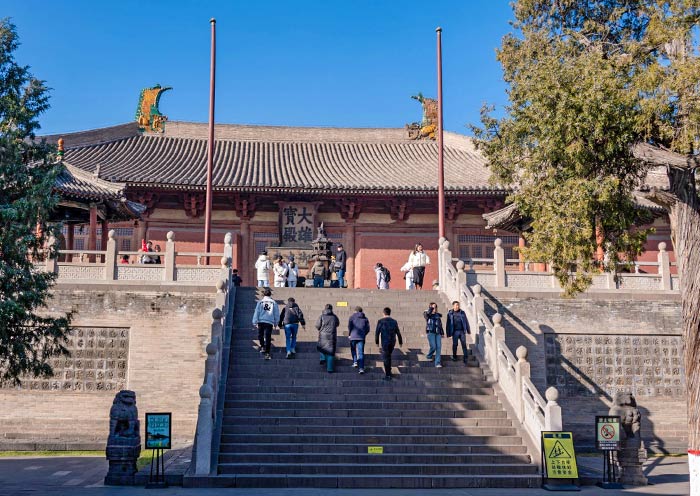
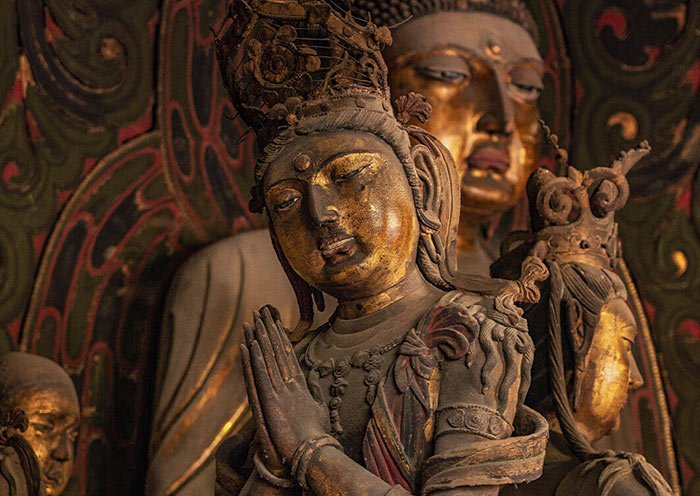
Highlights: Wooden Architecture, Colored Sculptures, and Murals.
Location: No. 459, Xia Sipu Street, Pingcheng District, Datong City, Shanxi Province, China
Ticket:
Peak Season: 50 yuan (April 1st - October 31st)
Off-peak Season: 40 yuan (November 1st - March 31 st)
Opening Time:
08:00-18:30 (April 1st - October 31st)
08:30-17:30 (November 1st - March 31 st)
Recommended Time: 1 - 3 hours
Huayan Temple (华严寺), with a history spanning over 960 years, is one of the three surviving Liao Dynasty temples in China. It is renowned for its unique Liao Dynasty architectural style and exquisite Buddhist art along the Shanxi day trip.
The temple's wooden structures, colorful sculptures, and murals are of exceptional artistic value, offering a visual feast for visitors.
The temple houses a vast collection of ancient Buddhist scriptures and literature. Its name, "Huayan," is derived from the Buddhist scripture, the Avatamsaka Sutra, symbolizing compassion and solemnity.
What to See at the Huayan Temple?
Explore the wooden architecture: Huayan Temple's structure is characterized by "one pagoda and two halls." You can explore the pure wooden mortise-and-tenon structure here, with upturned eaves and smooth lines, showcasing the superb craftsmanship of Liao Dynasty architecture.
Admire the murals: Entering the main hall of Huayan Temple, the four walls are covered with 21 giant murals. Appreciate the Buddhist stories depicted, including thousands of Buddha statues such as bodhisattvas, arhats, and Guanyin.
Marvel at the colored sculptures: Discover over 30 Liao Dynasty sculptures. The sculptures have vivid expressions and flowing robes, and the clasped-hands, tooth-showing bodhisattva is considered a gem among Liao Dynasty sculptures.
No. 9 Fogong Temple (Yingxian Wooden Pagoda) - The Nail-Less Wooden Marvel
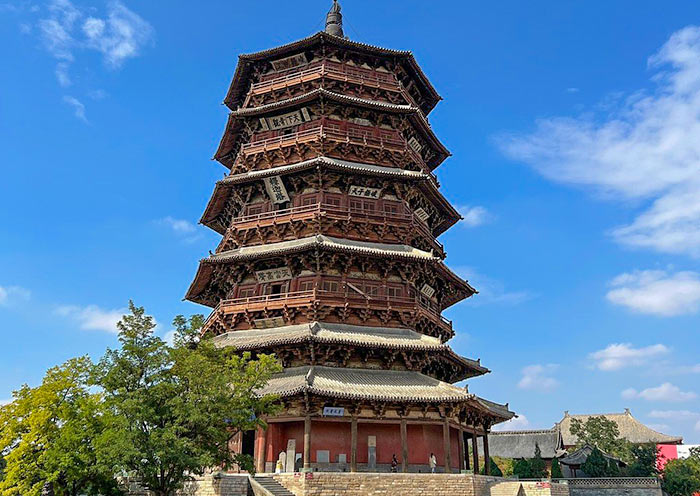
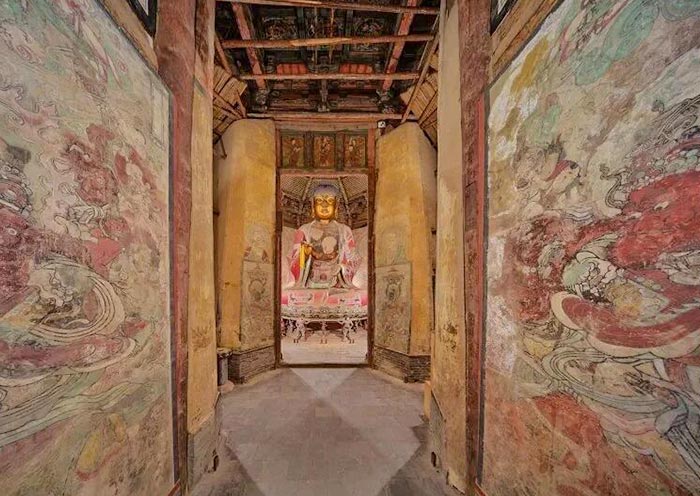
Highlights: World's Oldest and Tallest Wooden Multi-story Building.
Location: No. 1, Yingyuan Street, Yingxian County, Shuozhou City, Shanxi Province, China
Ticket: 50 yuan(January 1st - December 31st)
Opening Time: 08:00-18:00 (January 1st - December 31st)
Recommended Time: 1 - 3 hours
Standing at a towering height of 67.31 meters, the Yingxian Wooden Pagoda is a unique gem among Shanxi trip. It is renowned as the oldest and tallest wooden structure in the world. Despite enduring wars, earthquakes, and bombardment, this architectural marvel has stood tall for over 960 years since Liao Dynasty.
This colossal wooden pagoda, which rises majestically from the ground, was constructed entirely without the use of a single nail. Instead, it relies on intricate Chinese joinery techniques to fit together its wooden components.
Best Things to Do at the Yingxian Wooden Pagoda
Check the Tower's Exterior (See the Dougong Brackets): Each tier of eaves is supported by intricately carved dougong brackets, a distinctive feature of ancient Chinese architecture. These brackets create beautiful spatial curves. Weather permitting, you can take a few more laps around the wooden pagoda to appreciate the intricate craftsmanship.
Head to the First Floor (Other floors are temporarily closed): Regardless of your religious beliefs, the wooden pagoda is open to all. Visit the first floor to see the 11-meter-tall Shakyamuni Buddha statue and the intricate wall paintings depicting Buddhist disciples and deities.
No. 10 Datong City Wall - Check Uneven Wall and Barbican
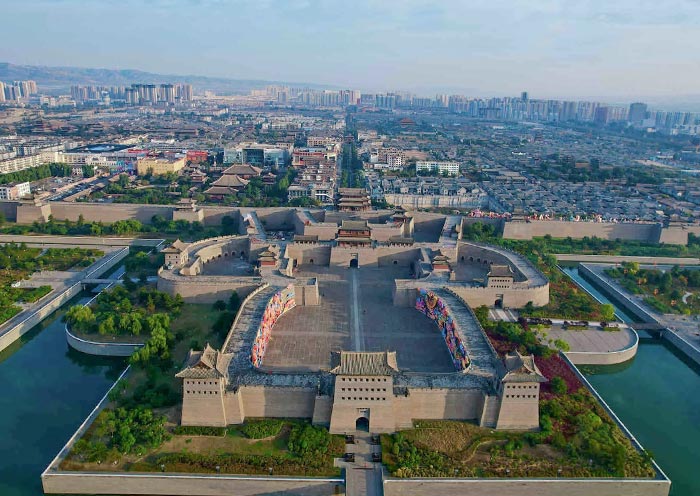
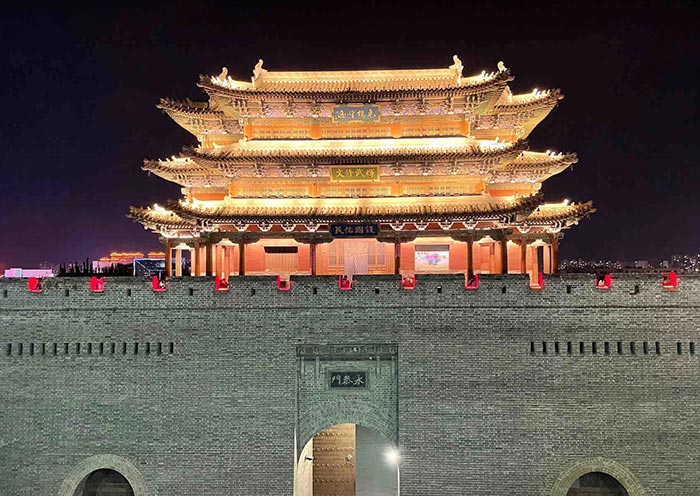
Highlights: Uneven Wall, Barbican.
Location: Caochangcheng Street, Pingcheng District, Datong City, Shanxi Province, China
Ticket: Free
Opening Time:
7:00 AM - 10:00 PM (March - May & September - November)
7:00 AM - 11:00 PM (June - August)
7:00 AM - 9:00 PM (December - February)
Recommended Time: 1 - 3 hours
The Datong City Wall, the "Key to North China", is a well-preserved Ming Dynasty fortification located in Datong City, Shanxi Province. Standing 14 meters tall, this ancient wall has guarded the region from nomadic invasions for centuries. Today, as you walk along its ancient walls, you can almost feel the echoes of the past and appreciate the ingenuity of its builders.
Uneven Wall and Barbican: A Unique Defense System
Walking beneath the city walls: one notices that the Datong City Wall, unlike conventional fortifications, features an irregular, interlocking brick pattern. This undulating surface provided ancient soldiers with multiple vantage points from which to monitor the border and launch attacks.
Check Barbican along the city wall: Visitors encounter protruding barbicans, complementary military structures that served as integral components of the city's defenses. To enter the city, one must first pass through these fortified outposts, which further bolstered the city's security.
No. 11 Zhangbi Ancient Castle - Venture into the Star Constellation Village and Its Underground Tunnel
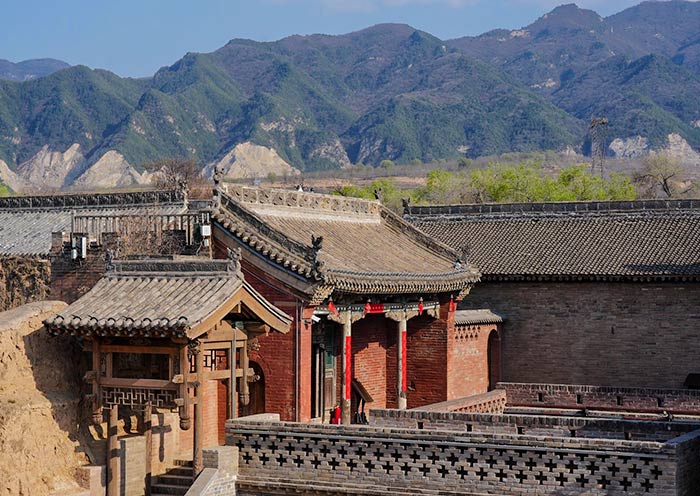
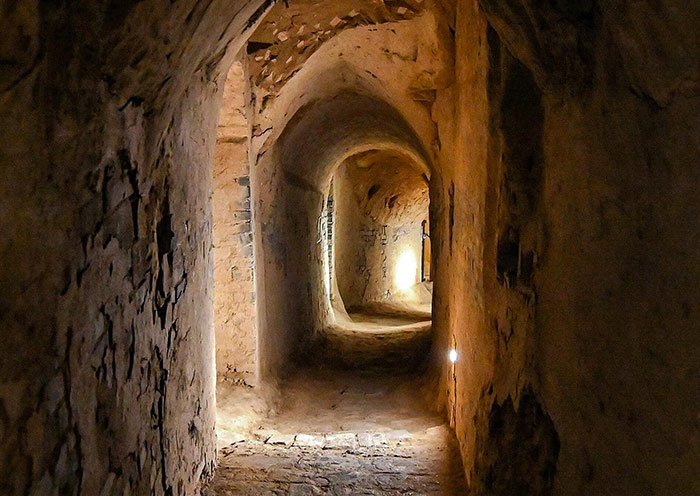
Highlights: Village with Star-related Features, 10-kilometer Underground Passage.
Location: Zhangbi Village, Longfeng Township, Jiexiu City, Jinzhong, Shanxi Province, China
Ticket: 67 yuan
Opening Time: 08:00-17:30
Recommended Time: Over 3 hours
Looking for a Shanxi tourist destination with a dual identity and fascinating transportation? Zhangbi Ancient Castle is one of the most popular Shanxi tourist attractions!
Built during the Sixteen Kingdoms period (304-439 AD), Zhangbi Ancient Castle boasts a history spanning over 1,600 years. This ancient, small castle served both military and civilian purposes. It is renowned for its unique above-ground city, constructed according to celestial constellations, and its extensive underground passageways with complete military facilities. This is a must-see destination for any visitor to Shanxi.
What to See Above and Below the Zhangbi Ancient Castle?
The above-ground city, also known as the Constellation Village, offers a breathtaking view. When looking down upon the buildings within the fortress, one will discover that the layout of the houses corresponds remarkably to the positions of the stars in the sky.
Beneath the fortress lies a staggering 10,000-meter-long underground passageway. Divided into three levels, this underground network is equipped with various military facilities such as traps, granaries, escape routes, ventilation shafts, drainage systems, storage rooms, and command centers, making it ideal for troop movements and supply transportation.
No. 12 Yanmen Pass - Ancient War Stronghold
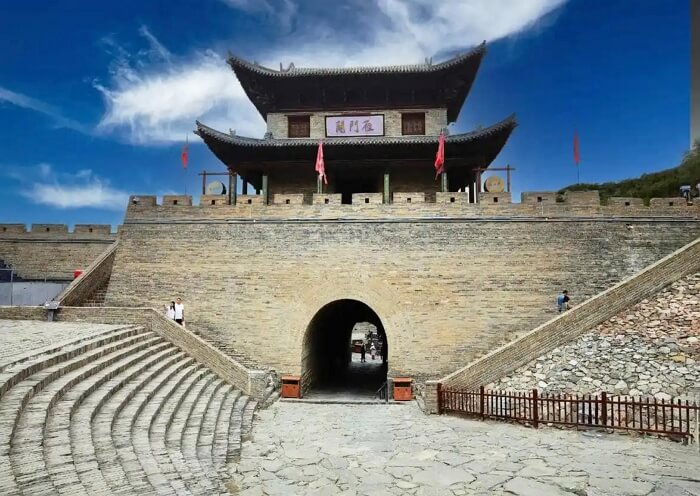
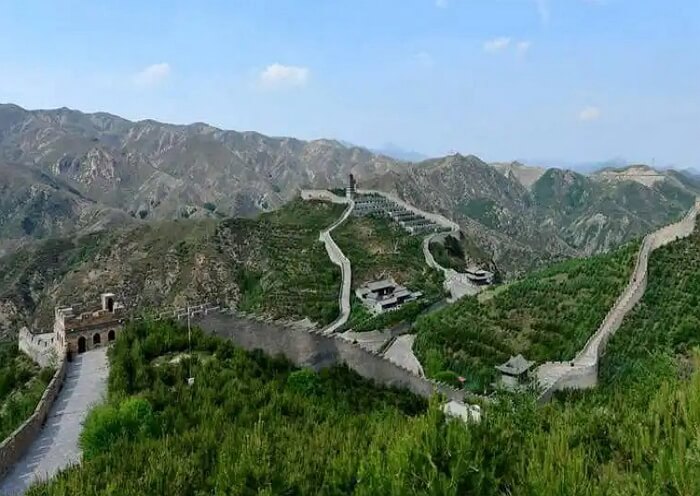
Highlights: China's First Pass, Pass City, Ancient Pass Road.
Location: National Highway 208 in Daixian County, Xinzhou City, Shanxi Province, China
Ticket:
Peak Season: 90 yuan (April 1st - October 31st)
Off-peak Season: 60 yuan (November 1st - March 31st)
Opening Time:
8:00 - 17:30 (April 1st - October 31st)
8:30 - 17:00 (November 1st - March 31st)
Recommended Time: 1-3 hours
While tourists are familiar with the Great Wall in Beijing, few realize the equally captivating Shanxi section. Known as the Yanmen Pass, this crucial Great Wall pass, built in 1374 during the Ming Dynasty, was a vital defense against nomadic invasions from the northern steppes. Hailed as the "First Pass of China," it offers visitors a glimpse into ancient battlefields and a chance to connect with historical figures like the Yang family, renowned for their military prowess, and Wang Zhaojun, who was sent to marry a Xiongnu chieftain for peace.
Yanmen Pass is famous for its imposing fortress and ancient pass road. The fortress, the heart of the defense system, is surrounded by temples where visitors can explore the history of renowned generals. The ancient pass road, winding for over 30 kilometers, offers a sense of vastness and adventure. Additionally, visitors can explore Yanmen Fort, a key military outpost that played a crucial role in defending the pass.
No. 13 Mount Wutai - Get Close to Ancient Temples and Natural Landscape
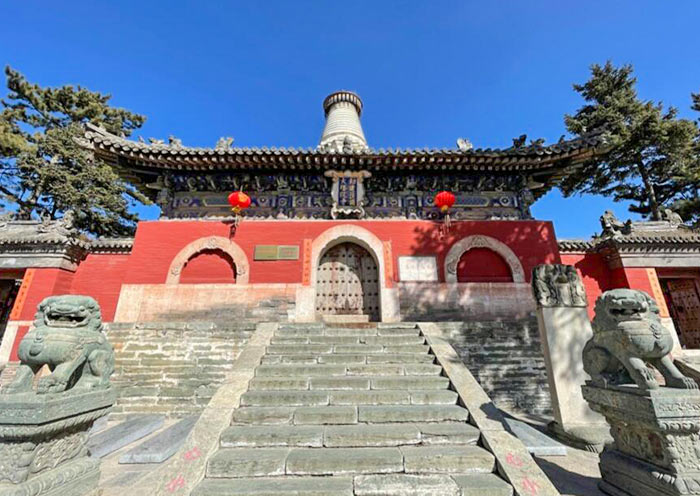
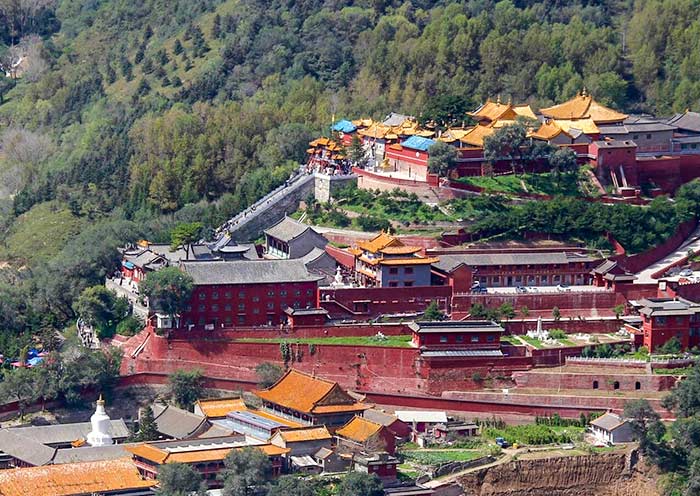
Highlights: UNESCO World Heritage Site, Ancient Temples, Natural Scenery.
Location: Yangbaiyu Village, Taihuai Town, Wutai County, Xinzhou City, Shanxi Province, China
Ticket: 135 yuan
Opening Time: Full day
Recommended Time: 2 - 3 days
When discussing Shanxi's natural and cultural landmarks, Wutai Mountain is a must-visit among the Shanxi attractions. Listed as a UNESCO World Heritage Site, it's also considered the foremost of China's Four Sacred Buddhist Mountains (along with Emeishan, Putuo, and Jiuhua).
Soaring to a height of 3061.1 meters, North Peak, or Pusading, is the majestic crown of Mount Wutai, earning it the title "Roof of North China." Comprised of five peaks with flat tops resembling platforms, Wutai Mountain is a truly unique and sacred place.
As a sacred pilgrimage site for Buddhists, a visit to Mount Wutai is incomplete without exploring its ancient temples. Each temple offers a unique architectural style, providing a rich opportunity for visitors to delve into Buddhist culture and find spiritual enlightenment.
Surrounded by cliffs, streams, and wild foxes, this is a great natural adventure for tourists.
Best Things to Do at Mount Wutai
You can't miss those ancient temples and touching nature!
Visit Taoyuan Temple: Admire the iconic 75.3-meter White Pagoda, built in the Northern Wei dynasty 1500 years ago. It houses relics of Buddha Shakyamuni and a hair of Manjushri Bodhisattva. Find inner peace as you circumambulate the pagoda.
Explore Shuxiang Temple: Witness the impressive 10-meter-tall Manjushri Bodhisattva riding a lion.
Discover XianTong Temple: The largest and oldest temple in Wutai Mountain, housing a vast collection of ancient Buddhist artifacts.
Ascend to Pusading Temple: The foremost temple in Wutai Mountain with Tibetan characteristics. It was visited by four Chinese emperors, leaving a lot of royal surroundings.
Enjoy Nature: Watch the sun paint the sky, breathe in the crisp mountain air, and maybe even make a furry friend – a wild fox! Who knew hiking could be this adventurous?
No. 14 Hukou Waterfall - Listen the Waterfall's Thunderous Call

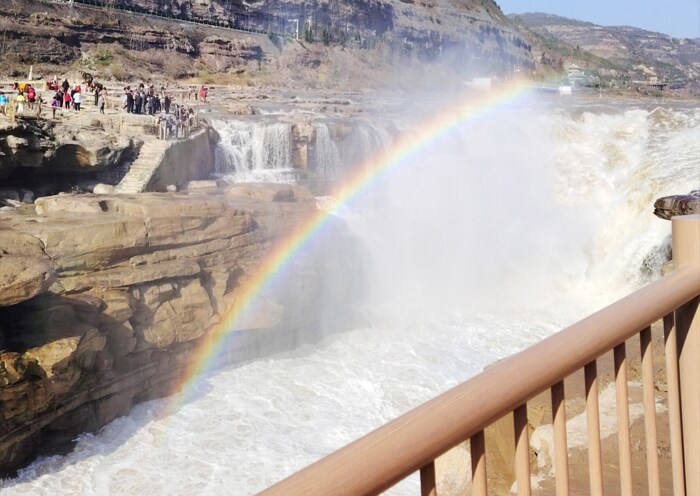
Highlights: Yello Waterfall, China's Second Largest Waterfall, Eight Wanders.
Location: Hukou Waterfall Scenic Area, Hukou Town, Jixian County, Linfen City, Shanxi Province, China.
Ticket: 100 yuan
Opening Time:
7:00 AM - 6:30 PM (April 1st - October 31st)
8:00 AM - 5:00 PM (November 1st - March 31st)
Recommended Time: 1 - 3 hours
Give your ears a treat with a sensory overload! Hukou Waterfall, the "loudest" attraction in Shanxi tourist attractions, is China's only yellow waterfall on the Yellow river and its second largest. Despite its relatively modest 50-meter height, its width spans a massive 300 meters, with enormous volumes of water cascading down every second. You'll need to shout, "Hey, can you hear me?" to be heard over the roar!
See Eight Wonders of Hukou Waterfall
The water surface is steaming: The violent impact of the rushing water against the surface creates a mesmerizing mist, giving the illusion of a cauldron of boiling water deep below.
Carrying boats on dry land: In the past, the waterfall was a natural barrier for boatmen, who could only stop upstream and carry their boats overland to the downstream side. Tourists can still see the traces of the past.
Rainbows play with water: It is a common rainbow sight, but with the rushing water as a companion, the rainbow takes on many different shapes.
Immense momentum: Nature forcefully narrows the flow of water, which then crashes down with a roar.
Rain on a sunny day: The waterfall's mist repeatedly sprinkles on visitors, like rain.
Like thunder: The surging water is like thousands of horses charging forward.
Forest of ice peaks: In winter, icicles of various sizes form on both sides of the waterfall.
Dragon's trough at the bottom of the water: there is a deep groove at the bottom of the valley, named after a dragon that is said to have passed through. In China, you will quickly become familiar with dragons.
Travel Itineraries for Shanxi Tour Shared By Asia Odyssey Travel
4 Days in Datong and Pingyao:
If you only have few days to explore the ancient Silk Road province of Shanxi, our experts at Asia Odyssey Travel recommend a 4-Day Datong and Pingyao Tour.
Day 1-2: Datong (Yungang Grottoes, Nine Dragon Wall, Huayan Temple, City Wall of Datong)
Start your journey in Datong, a city steeped in history. Visit the renowned Yungang Grottoes, a UNESCO World Heritage Site, and marvel at the intricate Buddhist sculptures. Explore the vibrant Nine Dragon Wall, adorned with colorful glazed tiles, and immerse yourself in the serene atmosphere of the Huayan Temple, a Liao Dynasty masterpiece. If you have extra time, stroll along the ancient Datong City Wall for panoramic views.
Venture outside the city to witness the architectural marvel of the Hanging Temple, perched precariously on a cliff face. Then, stand in awe of the world's tallest and oldest wooden pagoda.
Day 3-4: Pingyao
Take a high-speed train to Pingyao, a UNESCO World Heritage City. Wander through the well-preserved Pingyao Ancient City, visiting the Rishengchang Former Bank, a testament to the city's prosperous past. Explore the Ming and Qing Dynasties Temple of the City God and climb the ancient city wall.
For a cultural immersion, visit the Shuanglin Temple, known for its exquisite colored sculptures. Conclude your journey by exploring the impressive Zhangbi Ancient Castle and the opulent Wang's Family Compound.
6 Days in Datong, Wutai, Taiyuan, Pingyao:
If you're planning to add natural scenery into your Shanxi day trip, allocating 6 days would be reasonable. Consider adding a visit to Mount Wutai, a famous Buddhist mountain, and a relaxing stop in Jinci Temple of Taiyuan between your trips to Datong and Pingyao.
Day 1: Datong Yungang Grottoes – Nine Dragon Screen Wall – Huayan Temple
Day 2: Hanging Temple - Yingxian Wooden Pagoda
Day 3: Mount Wutai
Day 4: Mount Wutai - Jinci Temple of Taiyuan
Day 5: Taiyuan - Pingyao Ancient City
Day 6: Zhangbi Ancient Castle - Wang's Family Compound
Tailor your dream China adventure with Asia Odyssey Travel. Our experts will craft a personalized itinerary that caters to your specific interests and preferences.
Hot City Tours:

